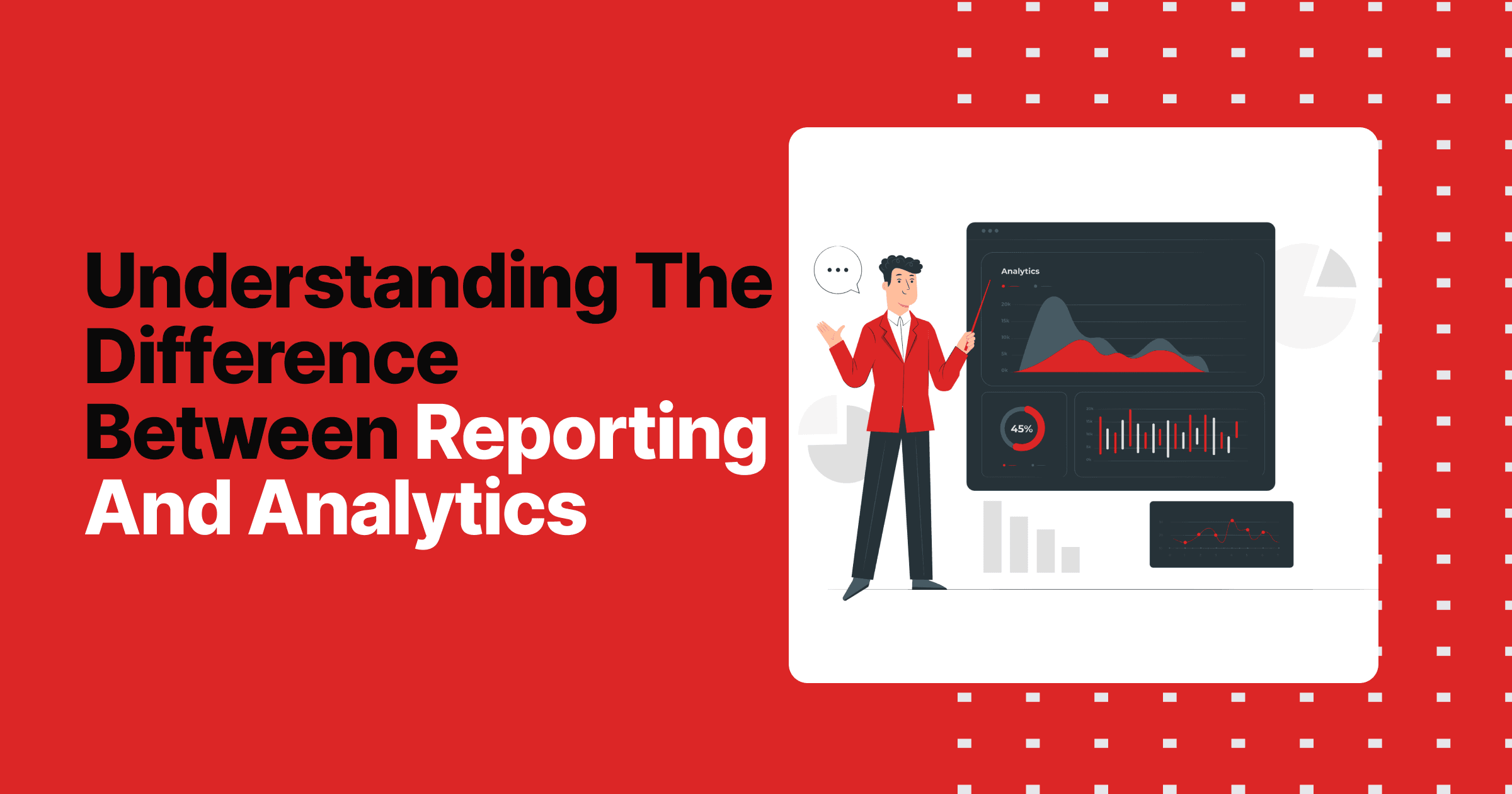It’s important to know the difference between reporting and analytics in order to know which will bring you the most value when measuring the combined performance of your digital marketing campaigns. It’s imperative for businesses to know how to set them apart as they each provide their own value, but they can also be used in combination with one another to help you get the most out of your digital marketing results.
What Is Reporting?
Let’s start by defining what a report is. A report is a representation of information that is compiled in a specific format for an audience or purpose. Therefore, reporting is the process of taking information, summarising it, and then presenting it to an audience.

What Is The Purpose Of Reporting?
Reporting is used to organize information in a way that shows us how marketing campaigns have performed over a certain period of time. The data is summarized and used to monitor the overall performance across digital marketing campaigns. Reports are created using core metrics which are presented in a way that shows a client how well certain aspects of the campaign performed as well as where goals were met or missed.
Reporting is a valuable form of business intelligence as it provides companies with information and helps raise questions about the data.
Reporting can be presented in the form of spreadsheets, PowerPoint presentations, email, or through the use of reporting software such as Oviond.
What Is Analytics?
Analytics is the process of explaining what is happening with data in the report. The data is explored, questioned, and interpreted so that only meaningful insights can be extracted from the report. This process helps us better understand the performance of marketing campaigns and answers questions about where improvements can be made.

What Is The Purpose Of Analytics?
As reporting helps us translate data into information, we are able to use analytics to get recommendations on where action needs to be taken.
Analytics is also a valuable form of business intelligence as it gives us insights and attempts to answer the questions that arose in the reporting stage. Analytics is actionable which requires us to follow up and act on the recommendations that come from the analysis of the data.
Main Differences In Reporting And Analytics Explained
Purpose
Reporting aims to show us what is happening. Analytics aims to explain why it is happening.
Tasks Involved
Reporting involves organizing and summarizing data into a format that will be understood by clients. Analytics goes a step further than this and involves questioning and exploring the data found in reports.
Use of Information
Reporting is used to pull information from multiple sources and then use that data to form a basic understanding of campaign performance. Analytics is used to understand the data and pull results in order to answer questions about the data in the report.
Value
Reporting provides us with the ability to understand the data. Analytics provides us with recommendations which in turn allow us to take action on the data the reports have provided us with.
Using Reporting And Analytics Together
Reporting is needed in order for us to have something to analyze; reporting would simply not make sense and provide any real insight without analytics. Simply put, both are crucial steps in helping us understand the data returned from marketing campaigns and they teach us how to use that data and take actionable measures in order to move forward.

Conclusion
Using a reporting tool to monitor and analyze your data will not only make the running of an agency easier, but it will also help to increase ROI in companies as all the information needed to make important decisions is provided in the report and actioned in the analytics.
For more digital marketing-related content, visit the Oviond blog.
